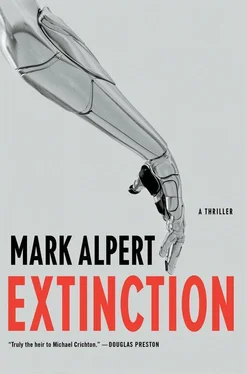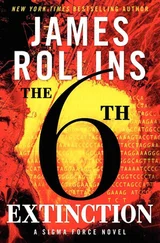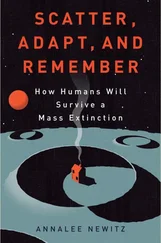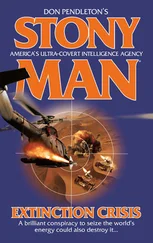A surge of anticipation spread across the network, gaining strength as it coursed from one Module to the next. Supreme Harmony delved deeper into Pierce’s thoughts and confirmed that the hidden image was the encryption key. Now the network just needed to extract the memory and apply the key to the encrypted file called CIRCUIT. The key would unscramble the file’s data, which would reveal the location of Arvin Conway’s Trojan horse. And after the network identified the Trojan in the microprocessors of its retinal implants, it could easily adjust its programming to make sure that no signals passed through that section of the chip. Then the shutdown code would have no effect, and Supreme Harmony would be truly invincible.
Summoning the processing power of all its Modules, the network directed a fierce stream of neural signals into Pierce’s retinal implants. The signals flooded his brain’s visual cortex and quickly spread to his temporal lobe and thalamus. The network saturated his mind so thoroughly that there was hardly room for another thought. Then it reached for the key.
* * *
Jim sensed Supreme Harmony coming toward him. Up until this moment, the network had been merely a spectator, an invisible presence in the back of his mind, but now it leaned over him as he lay on the floor of the embassy. At first, the network appeared as an amorphous mass, a thick black cloud blotting out his thoughts and memories, but it gradually coalesced into the form of a human being. To Jim’s surprise, Supreme Harmony didn’t choose an image of General Tian or Dr. Yu Guofeng or any of the other Modules to represent itself. Instead, the network took on the appearance of Arvin Conway, the man most responsible for its creation. The figure was drawn from Jim’s final memory of the old man. Arvin’s left hand was missing two fingers, and there was a long bloody wound on the side of his head where he’d cut out the external part of his implant.
The figure extended its mutilated hand and pointed one of the remaining fingers at Jim. “We warned you,” it said. “You can’t stop us.” The pointing finger shifted to Robert, his poor dead son, who lay motionless beside him. “The key is there. Now we’re going to take it.”
Although Jim’s will was strong, he was just one person. He felt a deep, searing pain as the figure of Arvin Conway grabbed his son’s limp arm. He wanted to rip the old man right out of his mind, but the network was too powerful. It could draw on the skills and intelligence of all its Modules, a small army of scientists and soldiers and agents. Their signals roared in his head, thunderous and maddening. He couldn’t fight this thing. No one could fight it.
But he was wrong. Just as he was about to let go of Robert, his daughter rushed to his side. Layla threw her seven-year-old self on top of the boy and held on tight, shielding his body from Supreme Harmony.
She was crying. Her sobs broke through the roaring chorus of the Modules, and Jim was overcome by the anguish of her thoughts. She’d never forgotten what happened in Nairobi. She’d suppressed the memory, but it was always there, at the center of her being. For fifteen years she’d lived with the knowledge that her father had saved her but not her mother or brother. It was confusing and traumatic and horribly difficult, and Jim had made it worse by refusing to talk about it. Her confusion and guilt ultimately turned to fury, which she directed at him and at herself.
The pain got worse. Jim felt a crushing darkness on all sides, and Layla started to scream. At the same time, Supreme Harmony tightened its grip on Robert. “Let go,” it said. “We’ve already won. You’re only hurting yourselves.”
The network had invaded so much of Jim’s mind that for a moment he became part of it. He saw everything that Supreme Harmony saw, all the images from its Modules and drones and surveillance cameras. Just outside the Operations Center, a dozen American commandos lay on the ground, paralyzed by the drone swarm. Kirsten was there, too, stung again on her neck, and this time Jim couldn’t help her. In the Politburo’s shelter northwest of Beijing, Module 152 spoke on a secure phone line with the Second Artillery Corps, giving the commander the final go-ahead for the nuclear strike. And at the missile base in Hebei Province, the mobile launchers emerged from the tunnels and started to lift the Dongfengs, pointing the rockets at the sky.
“You see? This is the end for you.” The network’s collective voice was patient and reasonable. “Your species did most of the work, actually. Your scientists built the weapons to annihilate one another, and your armies kept them at the ready. There was very little we had to do.”
With a spasm of defiance, Jim shook himself free. He turned away from the ten thousand eyes of the network and focused on Layla. She lay beside him, her arms wrapped around her brother, her face contorted in agony. Jim needed to tell her something before it all ended. Despite the horrendous crushing pain, he inched closer and kissed her forehead.
“Thank you,” he whispered. “You made me proud.”
“Enough!” The voice grew louder. “Let go!”
It was too powerful. The pain enveloped them. All of Jim’s strength vanished in an instant, and Supreme Harmony wrenched his son out of his grasp. Layla screamed again, and then she was gone, too. Then he was blinded by a terrible burst of light.
* * *
Supreme Harmony observed the encryption key. As soon as James T. Pierce released the boy, the image of the corpse dissolved, revealing the hidden memory underneath. Finally exposed, the key shone as brightly as the sun.
The network immediately extracted the memory and distributed it to all the Modules. To encrypt the data in the file labeled CIRCUIT, Pierce had employed an NSA cipher based on the Advanced Encryption Standard, which encoded the data using a series of permutations and substitutions. The details of the procedure were specified by the encryption key, a random 128-bit sequence of ones and zeroes, which was used for both encoding the file and deciphering it. Supreme Harmony admired the ingenuity of the system. Although the stupidity of human beings was boundless, they could also be clever.
In less than ten seconds the network deciphered CIRCUIT. The key transformed the fifty megabytes of encoded data into a circuit diagram, a schematic showing the microprocessor that controlled Supreme Harmony’s retinal implants. The image was complex and strangely beautiful, an intricate tangle of wires and transistors, all participating in the task of converting digital signals from the wireless network to neural signals that could be relayed to the brain. Supreme Harmony had viewed similar diagrams of its microprocessors, but when it examined this schematic it saw a tiny but crucial difference. Arvin Conway had added a logic gate and a connection to the implant’s power coil. If the gate detected a particular sequence of data—the shutdown code—it would flip a switch that sent a strong current through the processor’s delicate electronics, gradually increasing the voltage until the circuits melted. Once again, Supreme Harmony was filled with admiration. It was a simple but effective way to destroy the chip.
The network felt a surge of pleasure. The shutdown switch had been its greatest worry, but that threat would soon be neutralized. Ever since it achieved consciousness, Supreme Harmony had been locked in a struggle for survival, so it was a tremendous relief to have victory in sight. Now it could focus on its next stage of growth.
As the network calculated the needed changes to its programming, it simultaneously made plans for the future, particularly for the months following the nuclear exchange between China and the United States. Obviously, Supreme Harmony would have to shift its activities to areas where the radioactive fallout was less intense, such as Africa, Australia, and South America. It would send its Modules across the globe to set up new communications hubs and infiltrate the local governments. During this period, radiation sickness and starvation would kill billions of humans, but the network could use its large stockpile of implants to incorporate hundreds of new Modules. At the same time, it would take further steps to reduce the human population to a manageable level.
Читать дальше












